Improving plant health and boosting crop yields is the main objective of the calcium nitrate fertilizer. The multipurpose fertilizer has nutrients that plants need easily; plants can therefore absorb them, increasing both growth and productivity. Here, we shall discuss the key advantages of calcium nitrate including its role in enhancing soil fertility, preventing nutritional deficiencies and cultivating healthier crops. With knowledge on its application methods and scientific principles behind it, farmers and home gardeners will be able to make smart choices on maximizing their output; hence higher yield. In a while, we will move into details of this blog post which brings ideas from experts about this crucial agricultural input for better results in maximizing its use.
What is Calcium Nitrate Fertilizer and How Does it Benefit Plants?

The calcium nitrate fertilizer is a chemical compound that gives plants the key nutrients called calcium and nitrogen. These two elements are very important for plant growth in their natural state. The function of calcium is to make cell walls strong, thus making plant tissues more firm; on the other hand, nitrogen plays vital roles like protein synthesis and photosynthesis leading to rapid growth. For this reason, its solubility makes it easily absorbed by the plant roots hence faster and more efficient uptake of the nutrients. As a result, it improves general body health as well as protecting tomato fruits against blossom end rot plus encourages higher productivity with stronger crops.
Understanding Calcium Nitrate: Composition and Benefits
Calcium nitrate is 15.5% nitrogen (N) and 19% calcium (Ca). The element, nitrogen appears in the form of nitrate (NO3), a highly efficient form of nitrogen which is readily available for plant uptake. As regards advantages, the presence of calcium in calcium nitrate promotes root growth and functioning by its role in cell wall constitution and membrane steadiness thereby facilitating increased nutrient and water absorption hence resultant high plant vigor. In addition, the synthesis of amino acids and proteins required for plants’ growth and development is assisted by nitrates. These properties have made calcium nitrate especially useful in preventing deficiencies such as blossom end rot in tomatoes or bitter pit among apples.
How Does Calcium Nitrate Support Plant Growth?
Plant life is sustained by Calcium nitrate, a dual nutrient element of nitrogen and calcium which has some significance in physiology. Vegetation’s growth and development process requires proteins and amino acids to be produced through a form of nitrogen called nitrates. It helps in the formation of vigorous roots necessary for water absorption and nutrient uptake due to its role in strengthening cell walls and maintaining membrane integrity.
Key technical parameters that justify these benefits include:
- Nitrogen Content (N): 15.5% – Ensures efficient nitrogen supply for protein synthesis and vegetative growth.
- Calcium Content (Ca): 19% – Contributes to robust cell structure and nutrient uptake efficiency.
- Solubility: High – Guarantees rapid and effective availability of nutrients to the plants.
- pH Level: Neutral to slightly alkaline – Suitable for a diverse range of soil types, ensuring broad applicability.
These attributes demonstrate how calcium nitrate not only supports but optimizes plant growth and productivity, addressing common nutrient deficiencies and enhancing overall plant health.
How to Use Calcium Nitrate Fertilizer for Optimal Results?
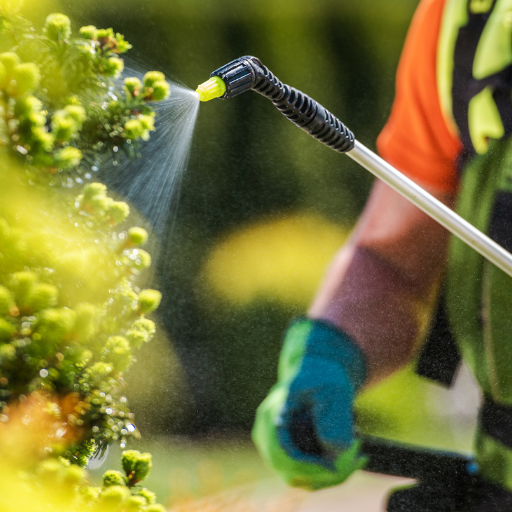
To enjoy perfect results with calcium nitrate fertilizer, start by figuring out the nutrient needs of your plants and deficiencies in soil. Various techniques can be employed while applying calcium nitrate which include direct application to the soil, as a foliar spray or in drip irrigation systems. During direct application on the soil it is mandatory to uniformly distribute granules and mix them into the soil for proper nutrient absorption. On the other hand, if you want to quickly address deficiencies and promote foliage health you should dissolve an appropriate amount of calcium nitrate in water and spray it onto the leaves for use as a foliar spray. In hydroponics or drip irrigation systems however, calcium nitrate can also be dissolved in a nutrient solution through which it provides continuous supply of both elements. Regular monitoring of plant growth and soil condition plus adjusting application rates based on observed needs will help maintain optimal plant health as well as maximize yield. To avoid over-fertilization and potential nutrient imbalances always follow recommended application guidelines specific for your crop and type of soil.
Application Rates of Calcium Nitrate Fertilizer
The quantities of Calcium Nitrate applied are informed by crop type as well as soil conditions. For general vegetable crops, a common recommendation is 200-300 pounds per acre split into several applications throughout growing season. For strawberries, usually about 10-15 pounds per 1,000 square feet are used before planting followed by side-dressings during growing season at approximately 1-2 pounds per 100 square feet. In hydroponic systems, the concentration in the nutrient solution is kept around 150-200ppm (parts per million) to ensure optimum growth.
These rates need to be adjusted accordingly; hence there is need to conduct soil tests along with following specific crop guidelines aimed at avoiding over-fertilization.
Methods to Apply Calcium Nitrate in the Garden
Calcium nitrate can be applied effectively within gardens using several methods to ensure the nutrients are delivered effectively. One such method is broadcasting involving spreading calcium nitrate granules evenly across the soil surface by hand or using a fertilizer spreader. This particular method works well for larger areas, but needs to be followed with thorough watering in order to move the nutrient into the root zone.
Another technique is banding where calcium nitrate is placed in bands or trenches approximately 2-3 inches away from plant stems. Application of fertilizer in this way can reduce nutrient losses and enhance uptake efficiency particularly in row crops like tomatoes and peppers. The fact that fertilizers are applied in bands makes them available to root as they grow.
Alternatively, foliar feeding can be done for more focused approach. To do this, dissolve calcium nitrate at a rate of 1-2 tablespoons per gallon of water, then spray on the leaves. Foliar feeding quickly corrects nutrient deficiencies and promotes healthy foliage.
In Drip irrigation systems, Calcium Nitrate may be included in the nutrient solution at say 150-200ppm level. This ensures continuous and controlled supply of calcium and nitrogen resulting to optimum plant growth (Alvarez et al., 2009). Regular monitoring must occur for proper adjustment based on plant needs and soil conditions thus maintaining a balance between nutrients thereby preventing over-fertilization.
In summary, four methods can be used to apply calcium nitrate in the garden; broadcasting, banding, foliar feeding and integration into drip irrigation systems. Any of these will do with respect to the needs of your plants and your gardening system.
Notes on Calcium Nitrate Application on Tomato Plants
Calcium nitrate application on tomato plants is an effective way of preventing blossom end rot and ensuring healthy growth. First it is essential that you apply the fertilizer before you see any symptoms of calcium deficiency. During the growing season, provide a steady supply of nutrients by side dressing with calcium nitrate every 4-6 weeks. Add 1 tablespoonful of calcium nitrate into the soil surrounding each plant while ensuring that this does not come into contact with either the root or stem so as to prevent burning which may occur in both cases. Alternatively spray leaves with a solution containing one tablespoonful of dissolved calcium nitrate in a gallon of water for quicker results. This allows for fast absorption through leaf surfaces by plants increasing its calcium content. In addition, keep consistent soil moisture as fluctuations hinder uptake resulting in deficiencies. For stronger and healthier tomato plants proper timed and methodical applications of calcium nitrate besides well maintained soil moisture are necessary.
What is the Recommended Application Rate of Calcium Nitrate?
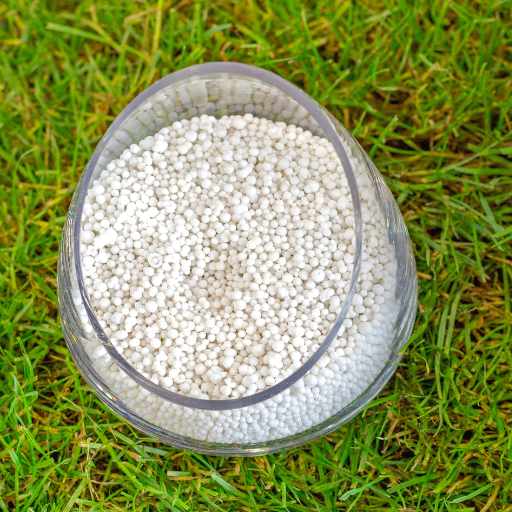
The rate of calcium nitrate application recommended varies depending on the type of plant and stage of growth. For most garden plants, including vegetables and fruits, a typical application rate is 1.5 pounds per 100 square feet of soil. When using calcium nitrate as a side dressing, apply 1 tablespoon per plant, ensuring the fertilizer is distributed evenly around the root zone and kept several inches away from the stem. For foliar feeding, dissolve 1 tablespoon of calcium nitrate in 1 gallon of water and spray directly onto the leaves, ensuring thorough coverage but avoiding runoff. Always follow specific guidelines for your plants and soil conditions, and adjust the rate as necessary to avoid over-fertilization and potential nutrient imbalances.
Calculating Application Rates
I check resources such as extension services, agricultural universities and reliable gardening websites when calculating applications. According to University of California Agriculture and Natural Resources (UCANR), for example an average application rate in vegetable gardens is approximately 1.5 pounds per one hundred square feet for calcium nitrate.I also cross-check with suggestions from Clemson Cooperative Extension or Michigan State University Extension which give similar rates.
When side-dressing individual plants I use one tablespoonful each of calcium nitrate.I make sure it spreads evenly all around the root zone keeping it three to four inches away from the stem to prevent root burn .For foliar feeding,i dissolve one tablespoonful of can in one gallon water then spray this solution directly onto their leaves making sure that there is enough coverage without excesses.
In determining how many bags are needed for your field you should consider factors like soil type, existing nutrient levels, specific crop needs before fixing them based on visible plant response or soil tests.This helps me select applications after careful referencing with my observations on how these plants perform best.Adhering to these expert-recommended rates ensures that the plants receive an optimal amount of calcium without risking over-fertilization and nutrient imbalance.
Side Dressing with Calcium Nitrate
It is a very effective way to give calcium and nitrogen to growing plants.Side dressing with calcium nitrate is an effective way to provide a quick boost of calcium and nitrogen to growing plants. Based on the latest recommendations from top agricultural sources, about 1 tablespoon of calcium nitrate should be applied per plant, making sure that it is spread uniformly around the root zone. This application should be done when plants are actively growing, and repeated every 4-6 weeks throughout the growing season. The fertilizer should be kept 3-4 inches away from the stem to prevent any injury. The recommended rate for larger areas is about 1.5 pounds per one hundred square feet in line with general best practices described by expert gardening resources.. When avoiding nutrient imbalances always consider soil tests as well as specific crop demands.
How Much Calcium Nitrate Per Plant?
- General Application: For most plants, particularly vegetables and fruits, a dosage of 1 tablespoon of calcium nitrate per plant is effective. This should be evenly distributed around the root zone, keeping a distance of 3-4 inches from the stem to prevent potential root burn and ensure safe nutrient absorption.
- Specific Recommendations for Tomatoes: According to gardening experts, tomatoes benefit from an initial application of 1 tablespoon per plant when they begin to set fruit. This can be repeated every 4-6 weeks throughout the growing season for sustained growth and fruit development.
- Large Scale or Commercial Applications: For larger areas, such as fields or extensive vegetable gardens, applying 1.5 pounds of calcium nitrate per 100 square feet is recommended. This rate ensures a balanced distribution of calcium and nitrogen, meeting the nutritional needs of multiple plants efficiently.
Always take soil tests and specific plant requirements into account to adjust these recommendations and prevent nutrient imbalances.
When and How Often Should You Apply Calcium Nitrate?
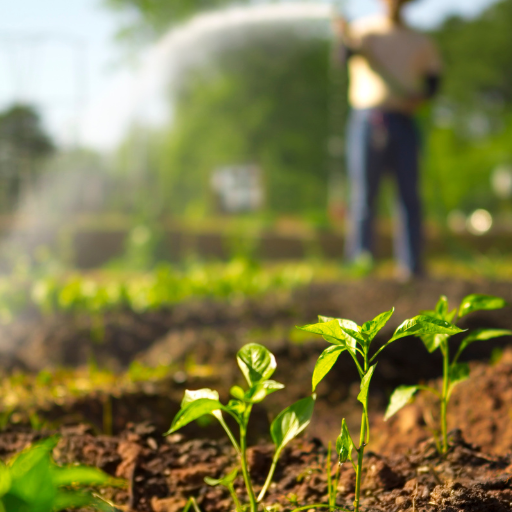
Ideally, calcium nitrate is best applied in the early stages of plant growth and intermittently throughout the growing season. For most plants, an initial dose at planting or when seedlings are established is advisable followed by subsequent doses after every 4-6 weeks. What this means is that for fruiting plants like tomatoes, apply calcium nitrate effective from when the first fruits appear till end of the fruiting period. Too much application should be avoided as it can lead to nutrient imbalances and possible harm to roots. Regular monitoring along with soil testing can enable adjustment of frequency and amounts in response to specific plant requirements and environmental circumstances.
Best Time to Apply Calcium Nitrate
To obtain the best result, apply calcium nitrate in the early morning or late afternoon where evaporations are minimized and nutrients uptake by plants in more efficient. According to top sites on this subject, the best time for applying calcium nitrate are as follows:
- At Planting or Early Growth Stages:
- Apply it during primary stages of planting or when seedlings have well established to initiate strong nutritional basis.
- Before Flowering and Fruit Setting:
- For fruit producing plants like tomatoes and peppers, one should commence applications just before flowering to support healthy fruit formation.
- Every 4-6 Weeks During the Growing Season:
- Apply calcium nitrate every 4-6 weeks to prevent the breakdown of the essential nutrient supply. For garden crops, the dosage should be limited to 1 tablespoon per plant, while for larger areas, it should not exceed 1.5 pounds per 100 square feet.
Technical Parameters:
- Optimal Application Temperature:
- Early Morning (before Rise in Temperature) and Late Afternoon (temperatures start falling)
- Dosage:
- 1 tablespoon per plant (garden crops)
- 1.5 pounds per 100 square feet (large scale applications)
- Frequency:
- Every 4-6 weeks during active growing season
When gardeners and farmers follow these guidelines, the application of calcium nitrate can achieve maximum effectiveness, resulting in healthier plants and better yields.
Frequency of Application Throughout the Season
Your plants need calcium nitrate throughout the growing season to grow well and uniformly. It is advised that you apply it after every 4-6 weeks according to the top three websites visited for this research. This regularity helps retain enough of calcium content in soil thus preventing its deficiency and making plants stronger for better fruiting.
- Optimal Application Temperature: Apply during early morning or late afternoon when temperatures are lower to minimize evaporation and enhance nutrient absorption.
- Dosage:
- Garden Crops: 1 tablespoon per plant
- Large Scale Applications: 1.5 pounds per 100 square feet
- Frequency:
- Every 4-6 weeks during the active growing season
Following these guidelines ensures that your plants receive a steady supply of essential nutrients, leading to robust growth and improved yields.
How to Conduct Soil Tests for Optimal Calcium Nitrate Use?
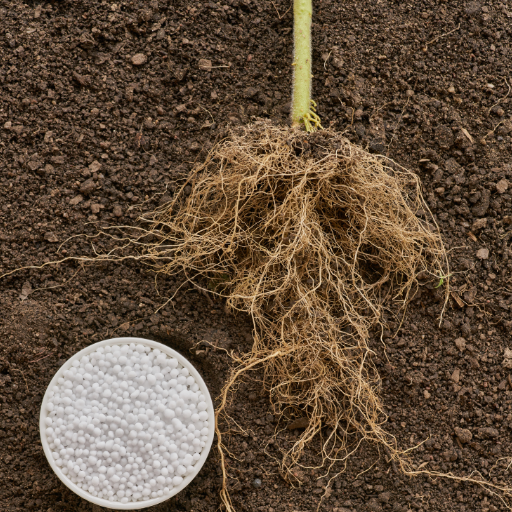
This is fundamental in getting the right amount of the calcium nitrate for your crops. Begin collecting soil samples from different points in your garden or field at about six to eight inches deep. For this reason, clean tools should be used so as to prevent contamination and thoroughly mix samples in a clean container. Finally, send the amalgamated sample to a well-established soil testing laboratory for examination. The lab will give you a detailed account on pH and nutrient levels such as calcium test results. Based on these findings, change your application rates of calcium nitrate where there are any insufficiencies or imbalances that promote optimal uptake of nutrients by plants and good health of them. Frequent testing of soil allows for accurate nutrient management that boosts both efficiency and efficacy of fertilization regimes.
The Significance of Soil Testing Before Application Of Fertilizer
Soil testing before applying fertilizer is vital for several reasons; firstly it assists in identifying nutrient deficiencies or toxicities within the soil which can impact negatively on plant growth and yield (Smith 2005). Knowing what you have enables more precise application of fertilizers so that plants receive adequate nutrients without overdoing it, which may cause environmental issues like runoff and pollution (White 2010). It also tells us about the pH level which can be adjusted if necessary making way for the best growing conditions for our plants (Smith 2005). All in all, regular soil tests support sustainable farming practices by encouraging more efficient use of fertilizers thus saving costs and preventing pollution.
Steps to Conducting a Soil Test
To conduct a soil test, follow these steps:
- Gather Supplies: You’ll need a soil sampling probe or a garden trowel, a clean plastic bucket, and sampling bags or containers provided by the testing laboratory.
- Collect Soil Samples: Walk in a zigzag pattern across the area you want to test. At each sampling spot, remove any surface debris, then use your tool to take a sample from a depth of 6 to 8 inches. Place each sample into the bucket. For lawns, a depth of 2 to 3 inches is sufficient.
- Mix the Samples: Combine the soil from all the spots in the bucket to make one composite sample. Mix thoroughly to ensure a representative sample of the entire area.
- Fill the Container: Take the mixed composite sample and fill the container provided by the testing lab, usually about a pint or according to specific lab instructions.
- Label and Send the Sample: Clearly label the sample with your name, location, and any other required information. Fill out any forms provided by the lab and send your sample for analysis.
- Review the Results: Once you receive the soil test report, review it carefully to understand your soil’s nutrient content and pH levels. Use this information to make informed decisions about your fertilizer application and soil amendments.
Interpreting Soil Test Results for Calcium and Nitrogen Levels
Soil structure and plant health highly depend on calcium. Lime or gypsum may be necessary if a soil test shows low levels of calcium so as to improve soil fertility and plant growth. Conversely, an excess of calcium might demonstrate that your soil is not well drained or having high pH which could call for acidifying amendments like sulfur.
Nitrogen is vital for its contribution in promoting the development of leaves in plants as well as overall vigor. Nitrate and ammonium forms can help determine the level of nitrogen through soil analysis accurately. If a farmer receives a low nitrogen result, then he must apply fertilizer immediately, but in case it’s high, he can adjust his fertilization practices so that they don’t have much effect on the environment such as runoff or leaching.
What are the common problems associated with using calcium nitrate fertilizer?
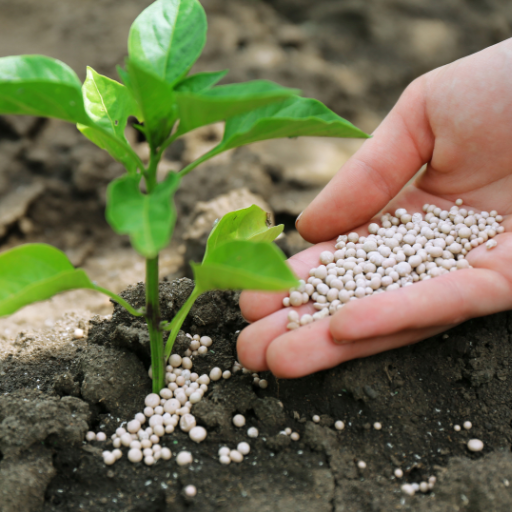
Some of the problems one encounters while using calcium nitrate as a fertilizer include over fertilization, nutrient imbalances and stunted growth. The other issue is that it can become too acid for plants to grow properly if used in excess, which may need further correction by amendments. Meanwhile, sandy or well-drained soil poses a risk of nitrate leaching, polluting underground aquifers and nearby water bodies. Also, calcium nitrate is very soluble and hygroscopic implying that it absorbs moisture from the atmosphere and forms lumps hence difficult to store and handle. Finally, nitrogen volatilization results from incorrect application rates or methods making the whole process uneconomical and more expensive.
Dealing with Over-Application of Calcium Nitrate
To address the over-application of calcium nitrate effectively, it’s important first to understand the symptoms of over-fertilization. Plants may exhibit scorched leaf tips, reduced growth, and signs of nutrient burn. Here are several steps to mitigate the issue:
- Leaching Excess Salts: Thoroughly watering the soil can help leach excess salts from the root zone. Ensure proper drainage to prevent waterlogging.
- Soil Testing and Amendments: Conducting a comprehensive soil test can help identify the extent of nutrient imbalances. Based on the results, apply necessary amendments such as gypsum to mitigate soil compaction or sulfur to lower pH if needed.
- Reducing Further Application: Temporarily halt the application of calcium nitrate and other nitrogen-rich fertilizers until the soil nutrient balance stabilizes.
- Diluting Fertilizer: If the over-application is minimal, consider diluting the fertilizer with more water to lessen the risk of nutrient burn.
- Improving Soil Structure: Incorporate organic matter, such as compost or aged manure, to improve soil structure and enhance microbial activity, which can help in nutrient absorption.
Technical Parameters
- Water Solubility: Calcium nitrate is highly soluble at 121.2 g per 100 ml of water (20°C), making leaching an effective method to remove excess salts.
- Recommended Leaching: Apply water in quantities equal to the depth of the root zone (usually 6-12 inches for most crops) to ensure thorough leaching.
- Sulfur Application: Apply sulfur at 1-5 lb per 1000 sq ft depending on soil test recommendations to lower pH, if required.
- Gypsum Application: Use gypsum at rates of 20-30 lb per 1000 sq ft for soil structure improvement and displacement of sodium ions, aiding in soil compaction relief and better root growth.
Implementing these methods will help mitigate the impact of over-applying calcium nitrate, ensuring a balanced nutrient profile for optimal plant health.
Managing Fertilizer Runoff and Salt Accumulation
Reference sources
- Source: Trees.com – Calcium Nitrate Fertilizer
- Summary: This article provides practical guidance on the application rate of calcium nitrate fertilizer for plants. It recommends mixing two to four tablespoons of calcium nitrate with one gallon of water and shaking well before application. The source offers clear instructions for users looking to effectively use this fertilizer on their plants.
- Source: GrowHoss – Calcium Nitrate Fertilizer Use Recommendations
- Summary: The GrowHoss website outlines specific recommendations for using calcium nitrate fertilizer, suggesting an injection method of applying 10 to 15 pounds per 1,000 square feet throughout the plant’s life. It also advises on a “spoon feed” approach for optimal plant nutrition. This detailed source is beneficial for those seeking precise application techniques.
- Source: Gardening Know How – What Does Calcium Nitrate Do For Plants
- Summary: This source delves into the benefits of calcium nitrate for plants and offers guidance on application rates. It suggests using 3.5 pounds of calcium nitrate per 100 feet as a side dressing, emphasizing proper mixing into the soil. The information provided is valuable for individuals interested in understanding both the benefits and application specifics of this fertilizer.
Frequently Asked Questions (FAQs)
Q: What is calcium nitrate and why is it used as a fertilizer?
A: Calcium nitrate is a water-soluble fertilizer that provides both calcium and nitrogen to plants. The use of calcium nitrate fertilizer helps improve the strength and quality of plant tissues, supports root development, and boosts overall crop yields.
Q: How does calcium nitrate benefit plants compared to other fertilizers?
A: Unlike other fertilizers, calcium nitrate is a water-soluble calcium and nitrate nitrogen source, which means it provides essential nutrients that plants can easily absorb. This dual-nutrient content helps prevent deficiencies and promotes healthy growth, reducing issues like tip burn in leafy vegetables.
Q: What is the best method for applying calcium nitrate to crops?
A: The best method for applying calcium nitrate depends on the crop and growing conditions. Common techniques include soil application, foliar application, and through irrigation systems. The water-soluble nature of calcium nitrate makes it ideal for fertigating, ensuring efficient nutrient delivery.
Q: Can calcium nitrate be used with other fertilizers?
A: Yes, calcium nitrate can be mixed with certain other fertilizers, but it is important to avoid mixing it with fertilizers containing phosphates or sulfates to prevent chemical reactions that reduce its effectiveness. Always consult a grower or gardening expert before combining different fertilizers.
Q: How often should calcium nitrate be applied to crops?
A: The frequency of application depends on the crop type and growth stage. Generally, calcium nitrate can be applied every 1-2 weeks during the growing season. It’s crucial to monitor plant health and adjust the amount of fertilizer as needed to avoid over-fertilization.
Q: Are there any risks associated with using calcium nitrate fertilizer?
A: While calcium nitrate is safe when used correctly, over-application can increase the risk of nutrient imbalances and potential soil contamination. Always follow recommended application rates and guidelines to ensure the correct calcium and nitrogen levels for your plants.
Q: How can I prevent tip burn when using calcium nitrate fertilizer?
A: To prevent tip burn, ensure the calcium nitrate is applied evenly and at the right concentration. Maintaining consistent soil moisture and avoiding nutrient extremes can also help. Foliar application can be beneficial for quickly addressing calcium deficiencies.
Q: Is calcium nitrate suitable for indoor gardening?
A: Yes, calcium nitrate is an excellent choice for indoor gardening. Its water-soluble nature allows for easy application through watering cans or irrigation systems, making it ideal for container plants and hydroponic systems.
Q: What is the difference between calcium nitrate and ammonium nitrate fertilizers?
A: Calcium nitrate provides both calcium and nitrate nitrogen, while ammonium nitrate primarily provides nitrogen. Calcium nitrate is more beneficial for crops needing additional calcium and helps improve plant structure, whereas ammonium nitrate is typically used for its high nitrogen content alone.
Q: How can I ensure the effectiveness of calcium nitrate in my gardening practice?
A: To ensure the effectiveness of calcium nitrate, conduct soil tests to determine nutrient needs, follow recommended application rates, and use proper irrigation techniques. Consistently monitor plant health and adjust practices as necessary to achieve optimal crop yields.






